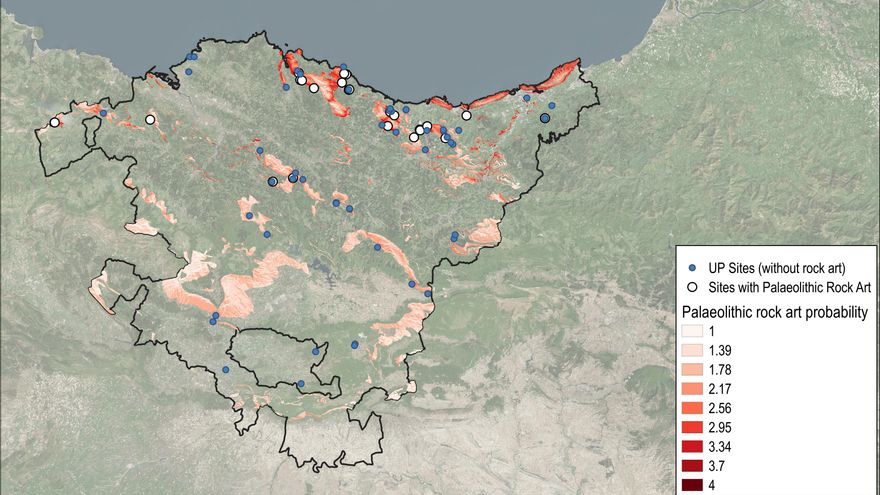Angela
Elite member
- Messages
- 21,823
- Reaction score
- 12,328
- Points
- 113
- Ethnic group
- Italian
See: http://archaeology.org/news/4260-160315-neanderthal-nuclear-dna
"LEIPZIG, GERMANY—An international team of researchers has analyzed nuclear DNA obtained from 430,000-year-old bones from the Sima de los Huesos, or “Pit of Bones” in northern Spain. Recent analysis of mitochondrial DNA from the bones indicated that these Middle Pleistocene hominins were distantly related to the Denisovans, who lived in Asia, despite their Neanderthal-derived features. But the information gleaned from the short fragments of nuclear DNA suggests that the Sima de los Huesos hominins were more closely related to Neanderthals than Denisovans after all. “We have hoped for many years that advances in molecular analysis techniques would one day aid our investigation of this unique assembly of fossils,” Juan-Luis Arsuaga of the Complutense University in Madrid said in a press release. The findings also suggest that Denisovans and Neanderthals had already diverged by the Middle Pleistocene. Neanderthals living in the Late Pleistocene may have acquired their mitochondrial DNA through gene flow from Africa. “These results provide important anchor points in the timeline of human evolution. They are consistent with a rather early divergence of 550,000 to 750,000 years ago of the modern human lineage from archaic humans,” added Svante Paabo of the Max Planck Institute for Evolutionary Anthropology."
This is the link to the paper:
http://www.nature.com/articles/natu...cPUzdv9g-EI=&tracking_referrer=www.nature.com
There is speculation that this pushes the divergence or split between the line leading to Neanderthals and that leading to humans to between 550,000 and 765,000 years ago, too far back to have been Homo Heidelbergensis. That would perhaps point to Homo antecessor, from whom we have bones dated to 900,000 years ago. However, remains from this hominid have not been found in Africa or the Middle East.
As was stated above, there is some speculation that people from Africa migrated to Eurasia and bred with Neanderthals, migrants who brought with them new stone-tool technologies.
Razib Khan has opined:
http://www.unz.com/gnxp/human-evolutionary-history-as-a-cryptic-tangle/#comments
"LEIPZIG, GERMANY—An international team of researchers has analyzed nuclear DNA obtained from 430,000-year-old bones from the Sima de los Huesos, or “Pit of Bones” in northern Spain. Recent analysis of mitochondrial DNA from the bones indicated that these Middle Pleistocene hominins were distantly related to the Denisovans, who lived in Asia, despite their Neanderthal-derived features. But the information gleaned from the short fragments of nuclear DNA suggests that the Sima de los Huesos hominins were more closely related to Neanderthals than Denisovans after all. “We have hoped for many years that advances in molecular analysis techniques would one day aid our investigation of this unique assembly of fossils,” Juan-Luis Arsuaga of the Complutense University in Madrid said in a press release. The findings also suggest that Denisovans and Neanderthals had already diverged by the Middle Pleistocene. Neanderthals living in the Late Pleistocene may have acquired their mitochondrial DNA through gene flow from Africa. “These results provide important anchor points in the timeline of human evolution. They are consistent with a rather early divergence of 550,000 to 750,000 years ago of the modern human lineage from archaic humans,” added Svante Paabo of the Max Planck Institute for Evolutionary Anthropology."
This is the link to the paper:
http://www.nature.com/articles/natu...cPUzdv9g-EI=&tracking_referrer=www.nature.com
There is speculation that this pushes the divergence or split between the line leading to Neanderthals and that leading to humans to between 550,000 and 765,000 years ago, too far back to have been Homo Heidelbergensis. That would perhaps point to Homo antecessor, from whom we have bones dated to 900,000 years ago. However, remains from this hominid have not been found in Africa or the Middle East.
As was stated above, there is some speculation that people from Africa migrated to Eurasia and bred with Neanderthals, migrants who brought with them new stone-tool technologies.
Razib Khan has opined:
http://www.unz.com/gnxp/human-evolutionary-history-as-a-cryptic-tangle/#comments


